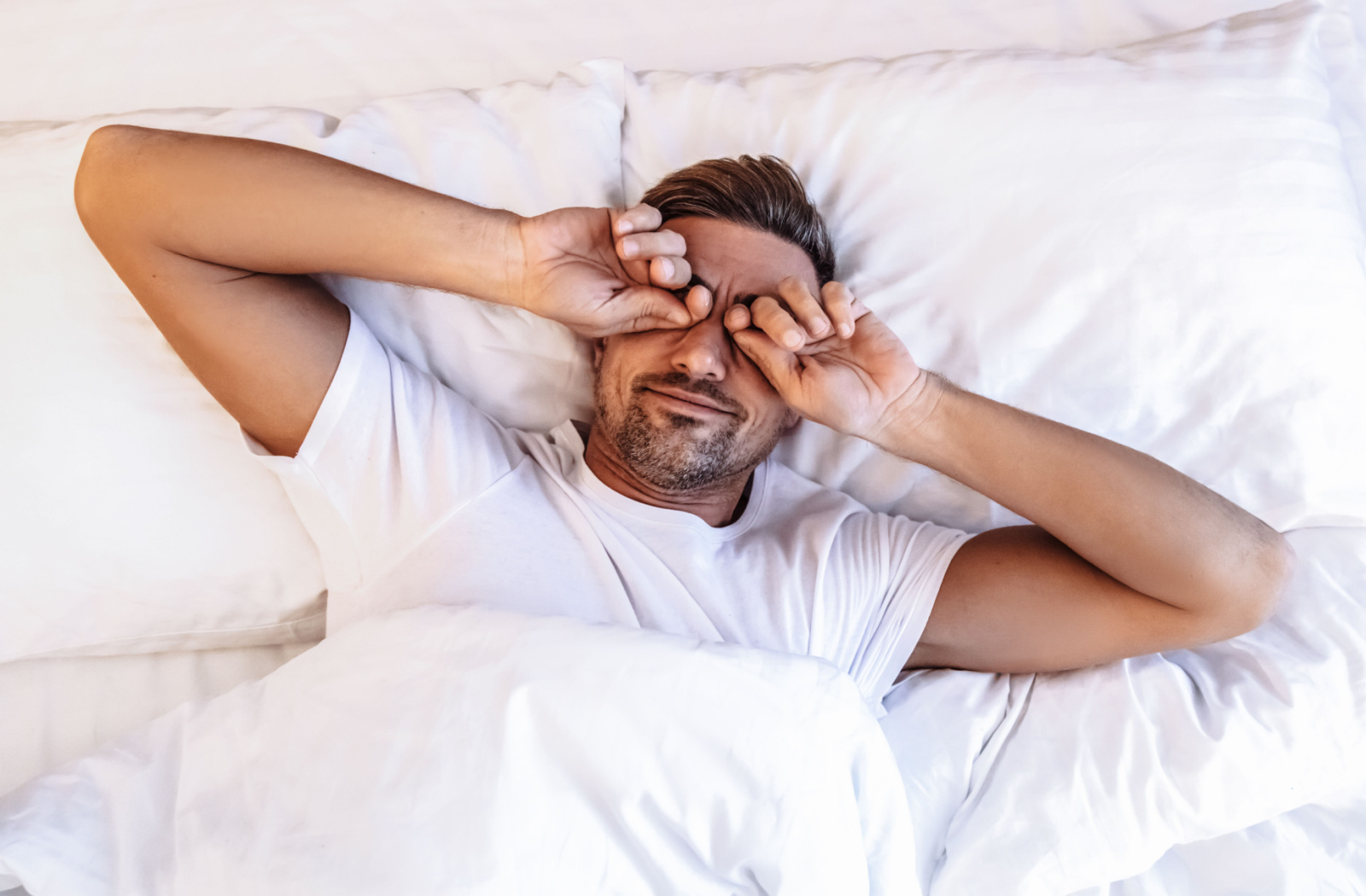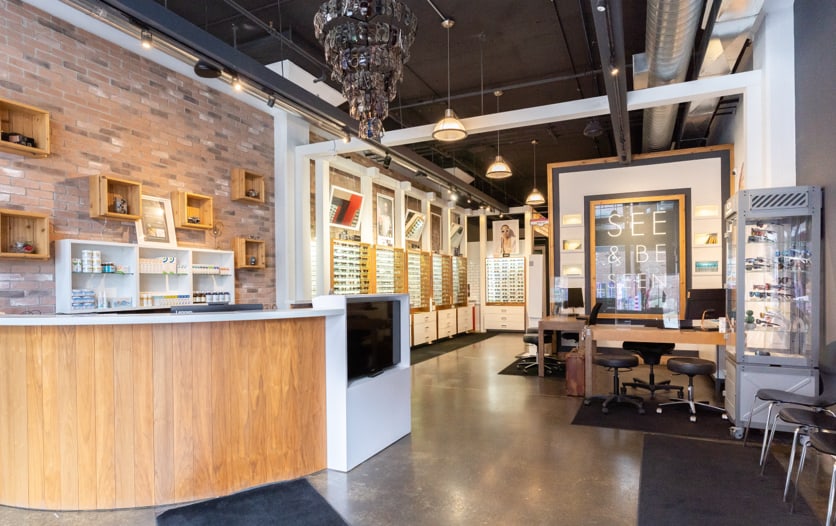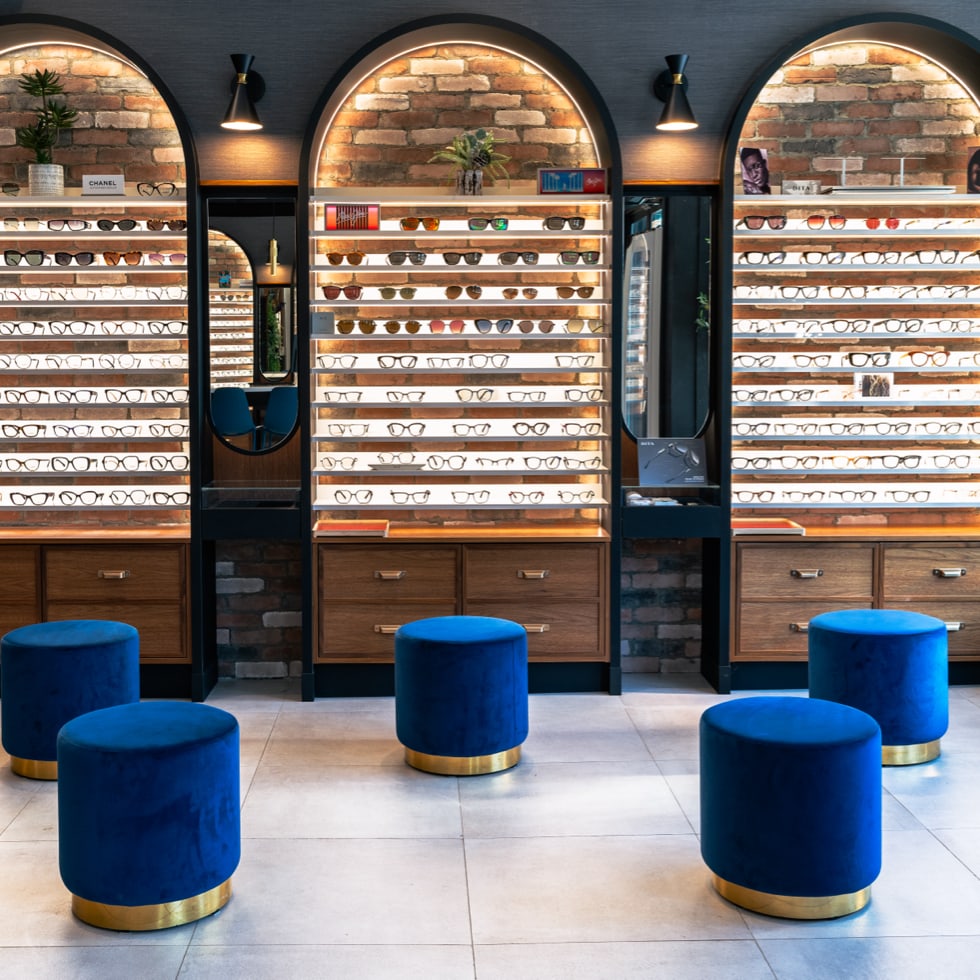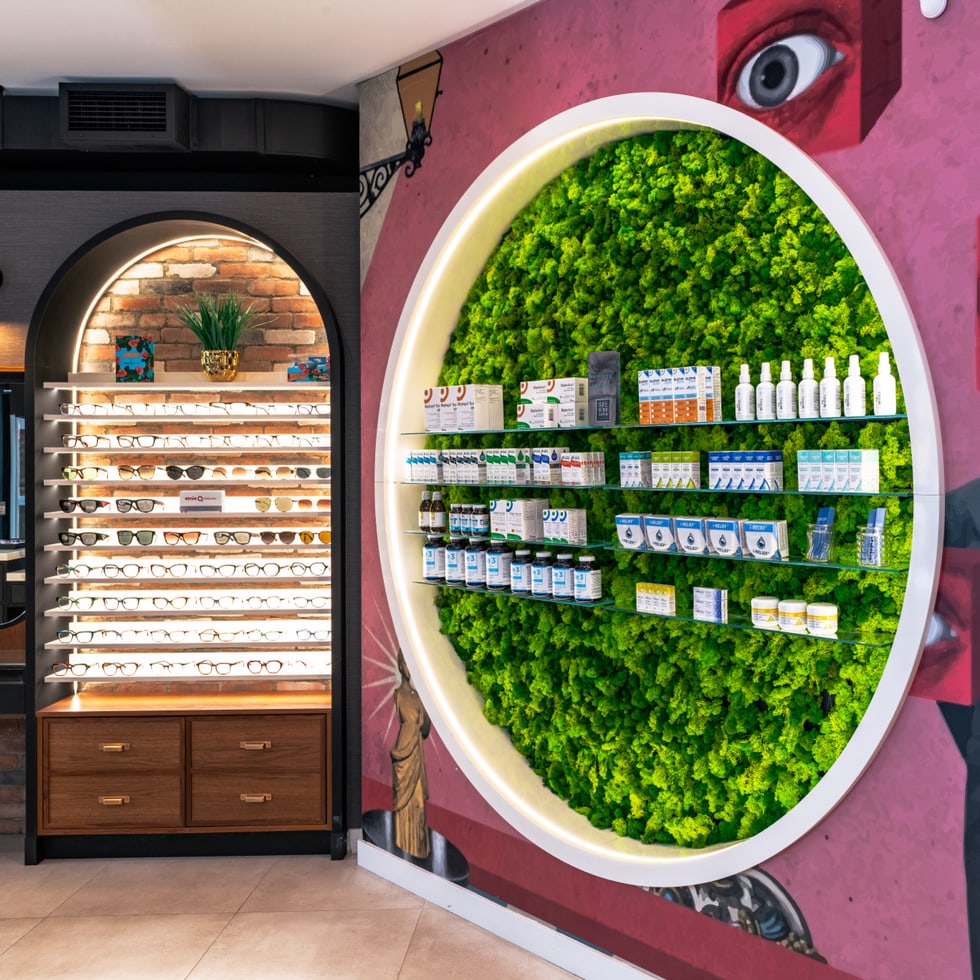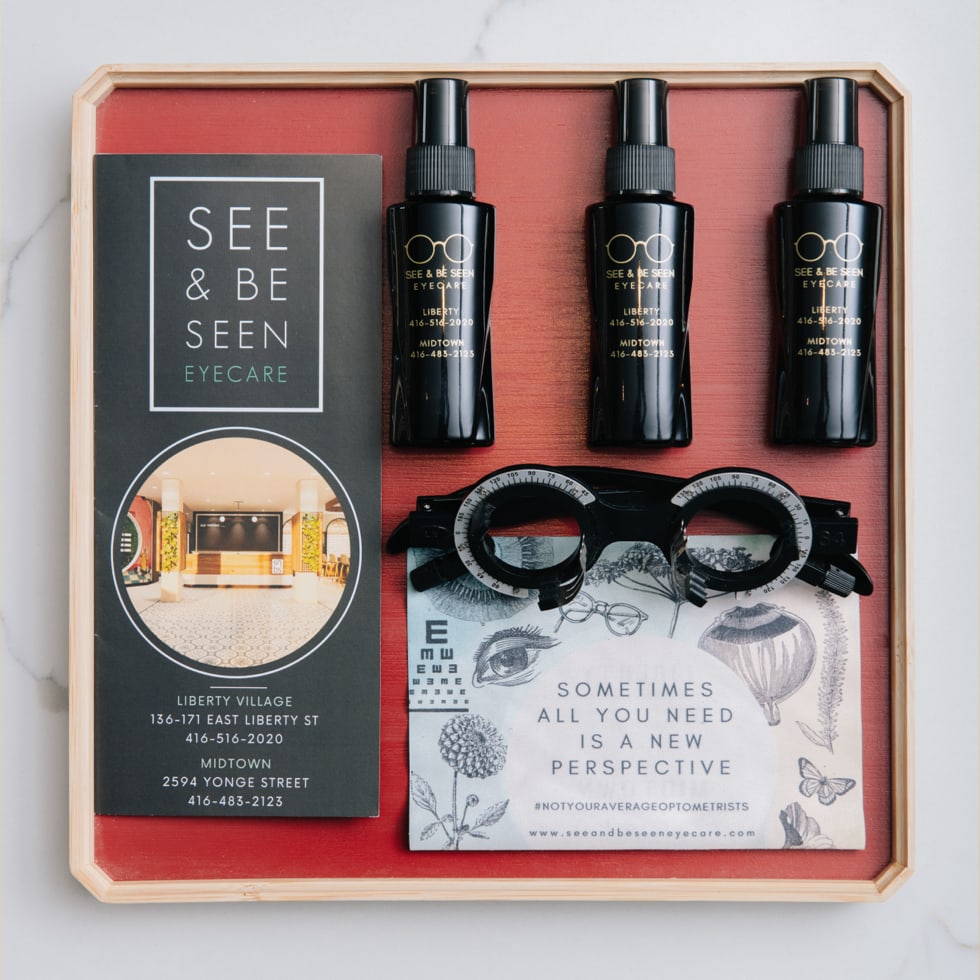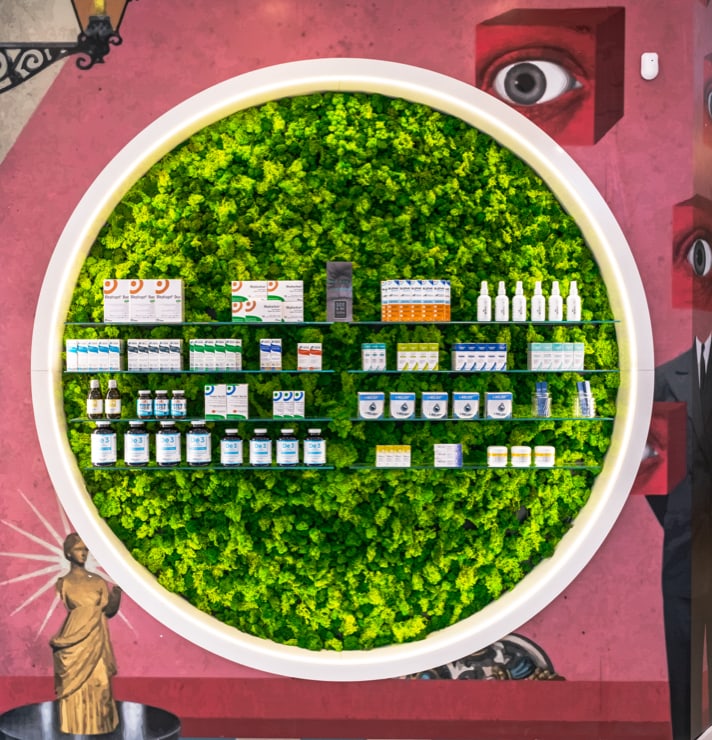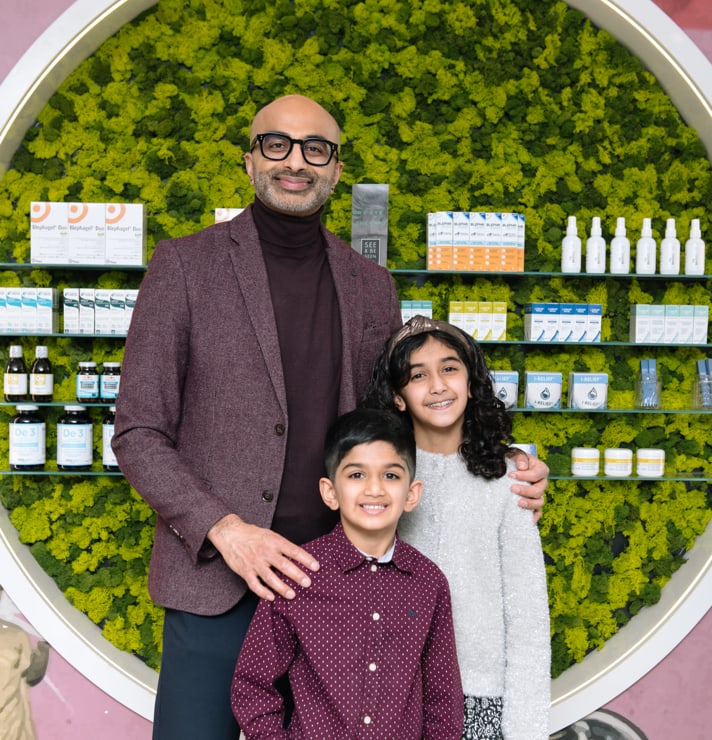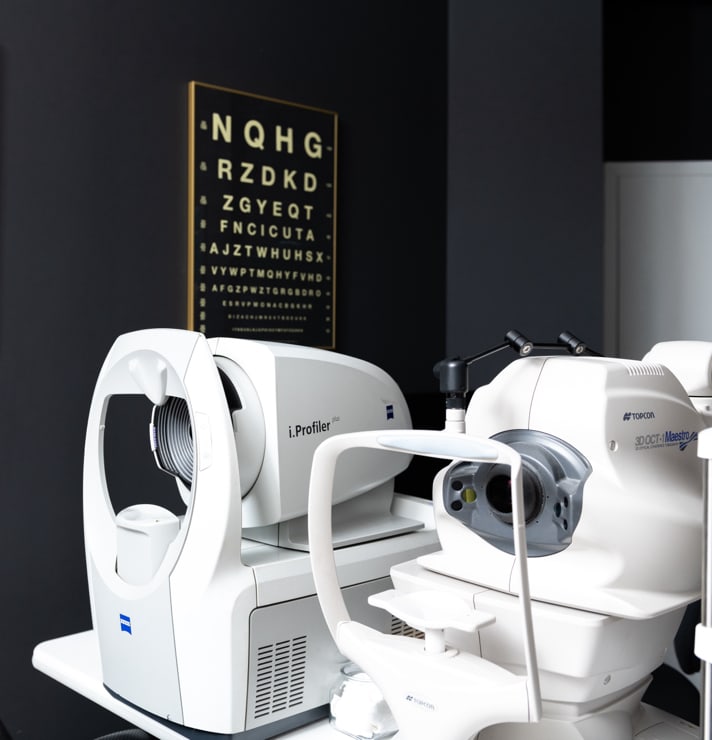Waking up with dry, irritated eyes is one of the worst ways to start the day. Several dry eye relief options are available, but finding peace from your symptoms is difficult if you don’t know the underlying cause. Understanding the root cause of your dry eye symptoms is the key to finding an effective treatment.
Experiencing dry eye symptoms when you wake up can be caused by sleeping with your eyes partially open, your bedroom environment, eyelid issues, hormonal changes, and digital device use. When you visit your optometrist for an eye exam, they can assess your ocular surface, discuss your symptoms, and identify the reasons for your eye irritation.
Waking Up With Dry Eye
Various causes, from behavioural to medical, can cause you to wake up with dry eyes.
Sleeping With Your Eyes Partially Open
Believe it or not, many people sleep with their eyes partially open. Medically known as nocturnal lagophthalmos, it’s typically caused by a problem related to weakness or paralysis in the muscles or nerves in the face. This can result from:
- Bell’s palsy
- Stroke
- Trauma
- Neuromuscular diseases
- Autoimmune conditions
- Infections
When your eyes are not fully closed, you are more likely to experience dry eye because your tears evaporate too quickly—sleeping with your eyes partially open leaves your eye’s surface vulnerable to damage or scratches.
Your Bedroom Environment
The environment in your bedroom can also play a significant role in causing dry eye. Air conditioning, ceiling fans, and heaters can cause the air to become dry and pull the moisture out of your eyes while you sleep.
A humidifier restores moisture to the air, reduces dryness, and improves tear film health.
Eyelid Issues
Another common cause of dry eye is eyelid issues. When your eyelids do not function properly, you may experience a decrease in tear production, contributing to dry eye.
Some eyelid issues that may lead to dry eye include blepharitis, which is the inflammation of the eyelids, and meibomian gland dysfunction, which prevents the gland in your eyelids from producing enough oil to prevent your tears from evaporating too quickly.
Hormonal Changes
People may experience dry eye during pregnancy, breastfeeding, menopause, and hormone replacement therapy due to hormonal fluctuations in the body. These changes can decrease tear quality and production.
Additionally, hormonal birth control and other medications may also cause dry eye as a side effect.
Digital Devices
Computers, tablets, and smartphones can contribute to dry eye symptoms. People tend to blink less when using digital devices, which can cause tears to evaporate quickly. Eye strain and fatigue that come from screen use habits can worsen dry eye symptoms.
Limit leisure time on your phone, tablet, or computer to promote healthy screen use. Maintain proper posture, take frequent breaks from your screens, and spend time outdoors.
Dry Eye Treatments & Remedies
You can find relief from dry eye with at-home remedies or in-office treatments for long-term results.
Eye Drops & Ointments
Lubricating eye drops are a versatile and simple method to relieve dry eye symptoms quickly. Ointments and gels are slightly thicker formulations, making them an ideal product to use overnight to wake up with refreshed eyes.
Eyelid Cleaners
Hygiene is critical in eye care, but it’s not just about washing your hands. Proper eyelid hygiene can prevent and treat blepharitis, which is closely linked to dry eye.
Omega-3 Supplements
Omega-3 fatty acids can help soothe inflammation and support healthy oil production. Many people don’t eat enough fish to get the recommended intake of omega-3, but not all supplements are the same. PRN omega-3 is a purified form of the supplement that provides the benefits without the synthetics for easy absorption.
Eye Masks
Warm compress masks can provide moist heat to relieve discomfort, support oil gland dysfunction, and stabilize the tear film. They also ease irritation from eye fatigue, digital eye strain, or contact lens discomfort.
LipiFlow
LipiFlow is an in-office treatment that uses gentle heat and pressure to treat dry eye caused by meibomian gland dysfunction. It stimulates healthy tear production and removes oil blockages to relieve dry eye symptoms.
Intense Pulsed Light Therapy
Intense pulsed light (IPL) therapy is an in-office treatment that uses precise light wavelengths to warm the meibomian glands, melt away oil blockages, and reduce inflammation. Once the glands are free to produce healthy, fresh oil, you’ll experience improved lubrication.
IPL is also an effective treatment for aesthetic skin concerns, including ocular rosacea and spider veins.
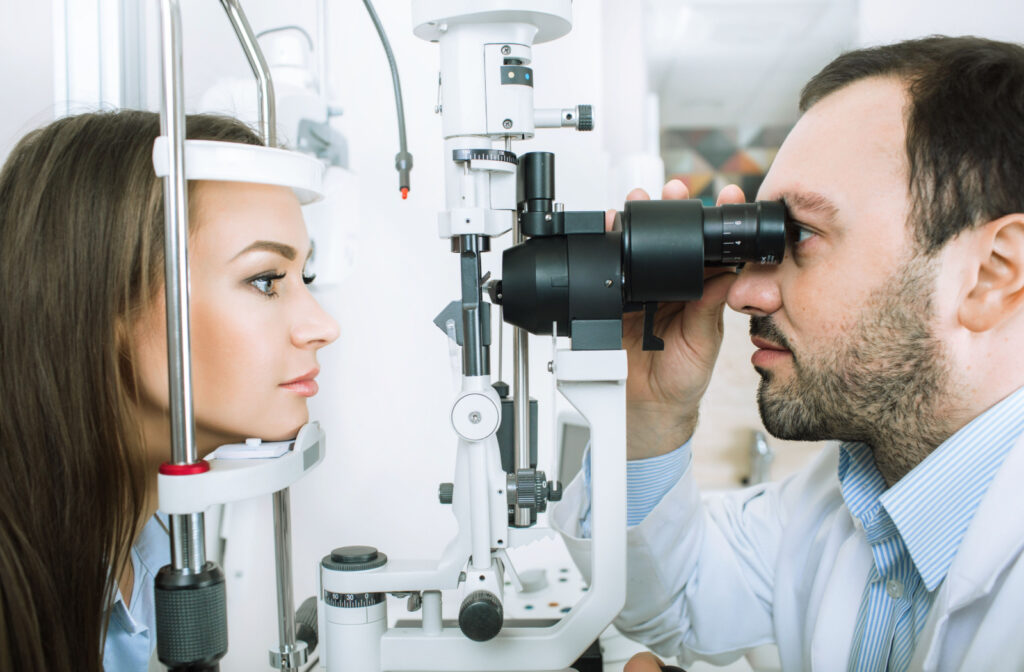
Achieve Long-Lasting Dry Eye Relief
Dry eye may be common, but you don’t have to suffer through the symptoms. The team at See & Be Seen Eyecare can offer guidance on treatments to manage or eliminate your symptoms. Whether you’re seeking at-home remedies or long-term solutions, schedule an eye exam for an assessment and treatment.

